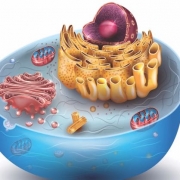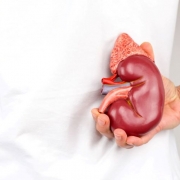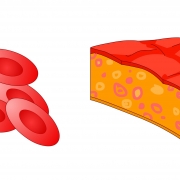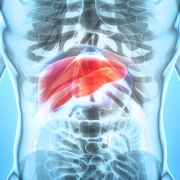What is the Lymphatic System?
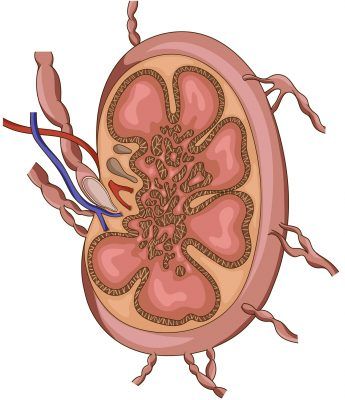
Here’s a riddle for you: I’m small, but I’m everywhere. I circulate, but I’m not the circulatory system. I’m not a nobody (or an antibody), and I’m certainly not immune to playing defense against invaders. If you think I don’t filter, you gotta be kidney-ing me. What am I? … The lymphatic system.
The headline might have given away the answer. But the collection of lymph nodes, tissues, and vessels is kind of a riddle. It runs parallel or works with many systems in your body—immune system, circulatory system, lymphoid system, and your large detoxification organs. And it’s so important, you’d think it would garner more attention.
This unsung hero of the body absorbs and transports large molecules (including protein and cellular debris) too large to be collected by veins and capillaries. This lymph fluid is then transported to lymph nodes that act as “filtering stations” in the body. In other words, the lymph system drains all of the waste materials that are produced by every cell within the body. Think of it this way, the lymphatic system is like an automatic flushing toilet. Without it, there would be too much waste within the body to process.
In the lymph nodes, white blood cells from the body’s natural defense system, called lymphocytes, help fight bacteria and viruses. There are two major types of white blood cells (WBCs or lymphocytes), namely, T-Lymphocytes and B-Lymphocytes, which are also termed as T-Cells and B-Cells, respectively.
Journey to the Center of the Neck
The fluid that runs through your lymphatic system is called lymph—makes sense, right? This colorless liquid is moved through the body in its own vessels. The lymph makes a one-way journey from the interstitial spaces in your body to the subclavian veins at the base of your neck.
Unlike the blood circulatory system, your lymphatic system lacks a pumping organ for the movement of lymph through its network of channels. The smooth, upward movement of lymph is assisted by the pressure created by the muscle and joint movement and the heartbeat. (And, as a bonus, a properly conducted massage is known to help improve lymphatic flow. So, if you need another excuse to get a massage, now you have one.)
As the fluid moves upward toward the neck, the lymph passes through lymph nodes. These sanitation stations filter the lymph to remove debris. If potential pathogens are present, they’re sequestered in the lymph nodes until immune cells come to kill them off.
Once it gets a thorough rinsing, the cleansed lymph continues to travel in only one direction—upward toward the neck. When it’s completed the journey to the neck, cleansed lymph flows into the subclavian veins on either side of the neck. Finally, it’s mixed with blood and taken to the heart where it’s pumped through the circulatory system.
Where to Find Your Lymphatic System
Everywhere. Your lymphatic system is all over your body. Most people have between 500 and 700 lymph nodes scattered throughout their body.
The lymphatic system network is situated in several areas of the body with a specific drainage pathway for each area. You’ll find the largest number of nodes in your groin, neck, and underarms.
Your lymph nodes come in two categories depending on location—superficial and deep.
Superficial Lymph Nodes Include:
- Axillary: Located under each arm, these nodes receive fluid from the arm, chest, back, and breast tissue.
- Inguinal: Located at the bend of the hip, these nodes receive fluid from the leg, lower abdomen, gluteal region, and external genitals.
Deep Lymph Nodes Include:
- Supraclavicular: Located at the neck just above the collar bones, this important node group receives fluid from the head and shoulders. That’s why, in the case of illness, the treatment of these lymph nodes precedes all other treatment.
- Deep Abdominal/Pelvic Nodes: The abdomen is richly invested in lymph nodes—they surround the organs and intestines. These nodes also receive fluid from the superficial inguinal area as well. Congestion in this area alone can cause swelling in the lower extremities, abdomen, and genitalia.
Lymphatic tissue is also found in other areas of the body, including the tonsils, spleen, intestinal wall, and bone marrow.
Immunity, the Lymphatic System, and the Gut
A large percentage of the body’s lymph tissue is associated with the gut and surrounds intestinal organs. This is partly due to the fact that the digestive tract is the main path of entry for unhealthy or offensive substances such as bacteria, allergens, heavy metals, fungi, and other contaminants.
Several aspects of the digestive system – enzymes, acids, and intestinal flora – attempt to neutralize the pathogens that invade our body. But, those that make it through are taken up and acted upon by the gut-associated lymphatic tissues (GALT).
GALT receives information from the microenvironment of the intestines in the form of which pathogenic agents get through. It then decides which of these deserve an allergic response, calling the immune and endocrine systems into action.
In general, healthy GALT function inhibits allergic responses and decreases food sensitivity. But this is complicated and often relies on the current state of an individual’s health status. It’s accurate to say that the healthier your gut-associated lymph tissue, the less sensitive you are likely to be to food-borne bacteria and chemicals. If the digestive tract is functioning poorly due to constipation, diarrhea, or other GI disorders, or even from something such as food sensitivities or stress, the flow of lymph fluid can be diminished.
Supporting Your Lymphatic System
The lymphatic system works constantly to keep you healthy and clean. Here are some lifestyle steps you can take to support the health of your lymphatic system:
- Eat a healthy diet. Reduce your body’s toxic burden by limiting processed food, emphasizing whole foods—with plenty of fruits, vegetables, and whole grains. The less waste and toxins your lymph has to deal with, the more efficiently it will flow.
- Drink plenty of clean water. Avoid being dehydrated. Your body needs hydration to keep the fluids running.
- Practice deep breathing. Breathing deeply from the diaphragm—not shallowly from the chest, and through the nose rather than the mouth—is a good way to move lymph fluid through your body.
- Stay active. Because lymph fluid moves slowly without aid of its own pump, inactivity can seriously restrict its flow. Muscular contraction through exercise and deep breathing is the primary means by which our lymph circulates. Moderate exercise such as walking, stretching, jumping on a rebounder, or yoga works. But anything active that you enjoy and do consistently is a good way to keep your lymph system pumping.


